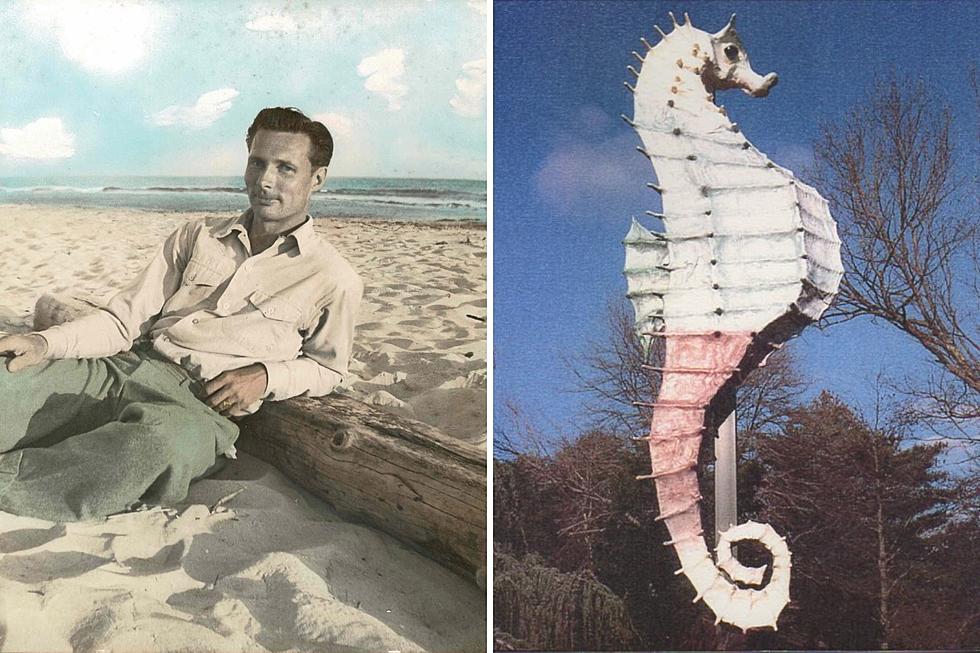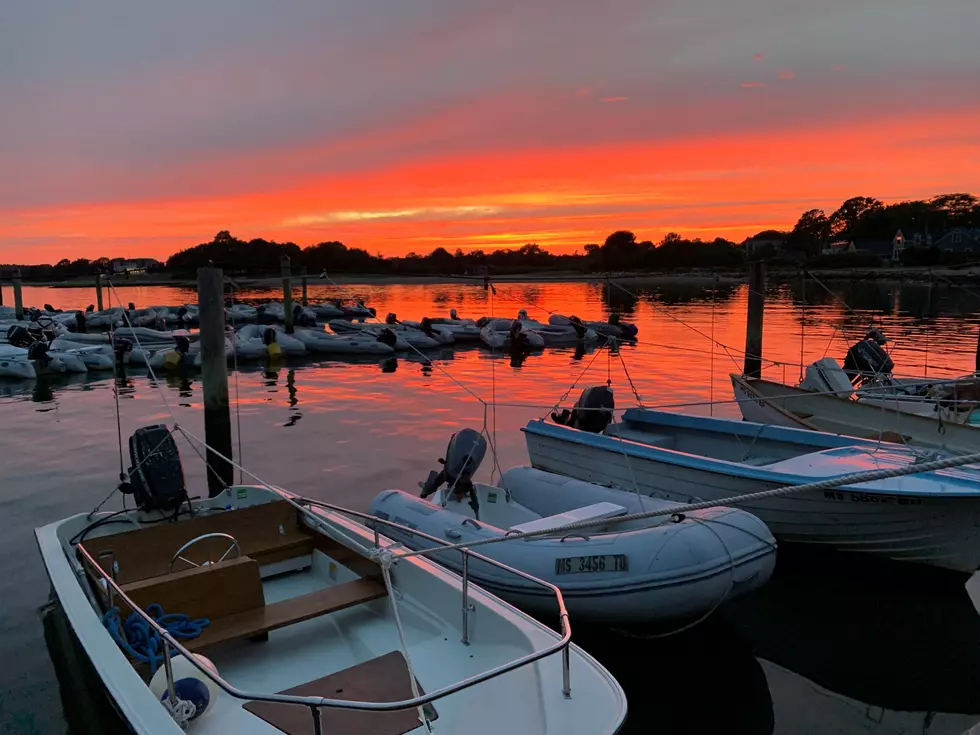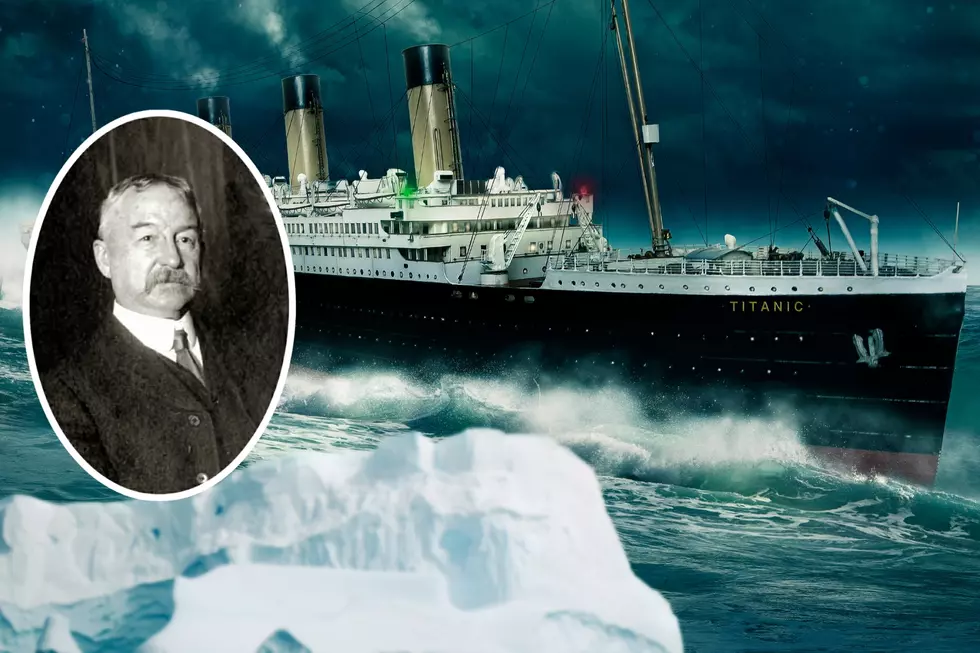
The True Story of Mattapoisett’s Salty the Seahorse
Have you ever wondered about how Salty the Seahorse in Mattapoisett came to be? As a newbie to the area, I sure have. I was fascinated by the gigantic statue the first time I saw it and I knew there must be a story behind its creation.
Here’s how Salty the Seahorse became a lasting landmark in the town of Mattapoisett.
The Mattapoisett Museum’s Facebook has become one of my favorite pages for intriguing stories about the town’s history. One of its recent posts caught my eye when I noticed an old photograph of a smiling man on a beach next to an aging photograph of the giant seahorse from Route 6. It gave me everything I’ve been dying to know about the landmark.
According to the museum, in the early 1950s, a gift shop owner named Henry Dunseith had an idea on how to make his business stand out on the busy roadway of Route 6. He enlisted the help of a friend named Theodore D. Tetrault to build an eight-foot seahorse on his property. Soon after, they constructed a much larger seahorse, standing at 38 feet, made out of fiberglass and chicken wire. Since the '50s, the gigantic seahorse has remained.
But where did the name Salty come from?
The Mattapoisett Museum explains that in the year 2000, the giant seahorse was restored, and the Mattapoisett Land Trust held an essay contest to give the seahorse a name.
“Then first-grader, Ally Lacross, and then fifth-grader, Maura Jones, won the contest and the seahorse was finally named ‘Salty’," the museum wrote.
Now, every time I drive by Salty, I’ll be reminded of Henry, the two little girls who gave him a name, and how a simple advertising gimmick turned into an iconic landmark for the SouthCoast.
LOOK: Stunning vintage photos capture the beauty of America's national parks
More From WFHN-FM/FUN 107









